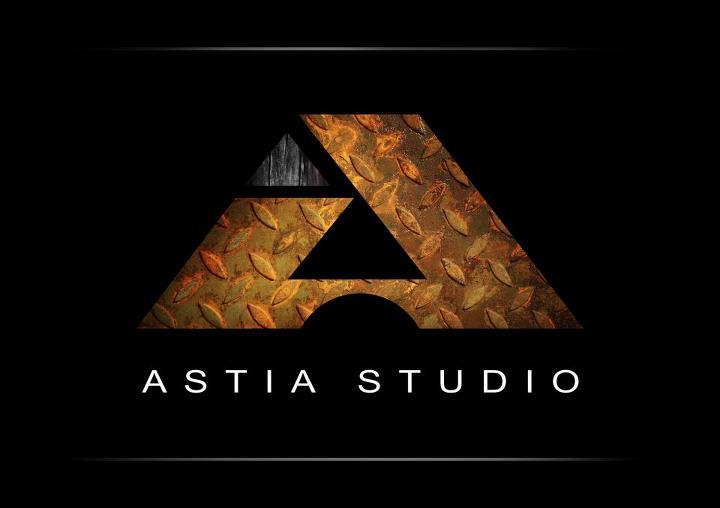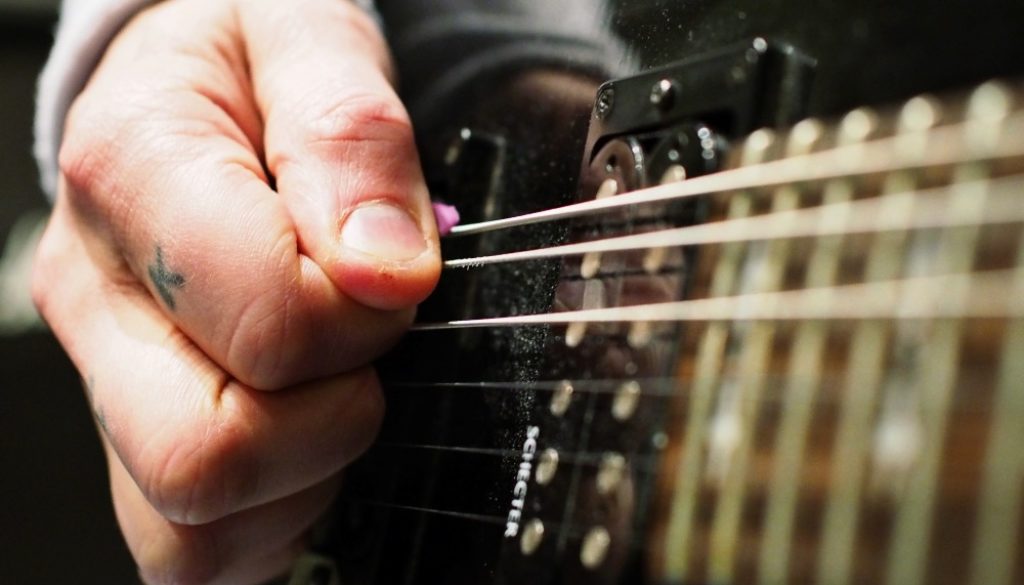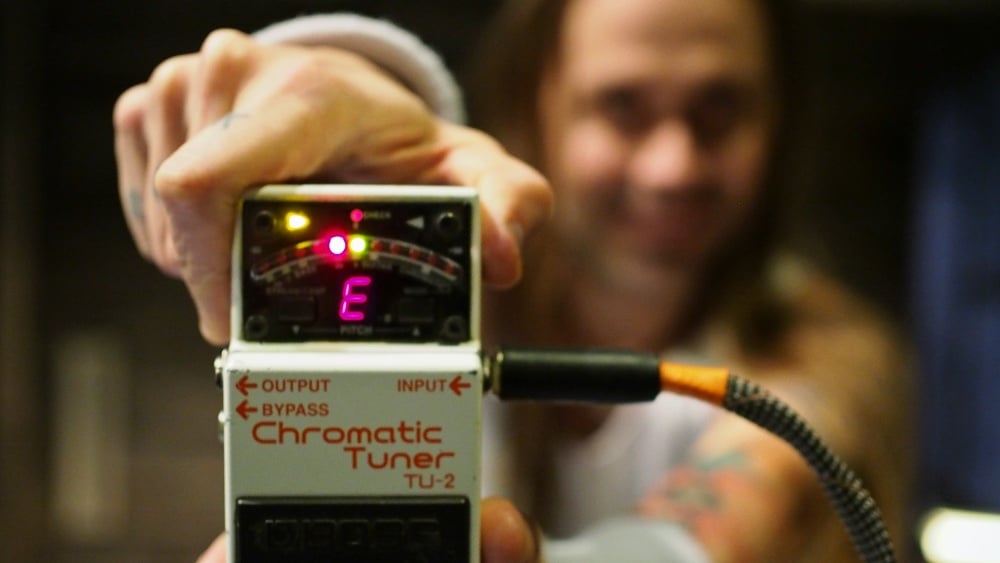Improve The Tuning Of Your Guitar, pt 2 – How to pluck the strings when tuning
As a guitar player you surely must know how hard tuning a guitar can get. Especially if you play with aggressive touch and pluck the strings hard. With this series I hope to help you with tuning-related issues, as I share my studio and live experience from the past quarter of a century. So let’s improve the tuning of your guitar, part 2 – How to pluck the strings when tuning.
Guitarist, recording engineer and bass player will benefit from reading this blog post. You will gain insight on how to tune your instrument more accurate and maybe even experience a eureka moment.
Improve The Tuning Of Your Guitar, pt 2
– How to pluck the strings when tuning
On the first part of this series you learnt how using tuners from different manufacturers may result in detune. If you haven’t read it yet, please learn more by clicking the link below:
Improve The Tuning Of Your Guitar, pt 1 – The Tuner May Cause Issues
By reading this 2nd part you’ll learn an important tip that has countless of times saved the recording session. Once you start using it, you will minimize the amount of detune.
Most of us tune the guitar using a tuner, so you too are most likely familiar with the device. Yet back in the 90’s I was baffled how some guitarists, even when using the very same tuner, managed to tune their guitar way off. Usually the pitch was a bit too high compared to other instruments.
The pitch actually doesn’t have to be that much off to end up ruining the whole song. So let’s go through a tip that will improve the tuning of your instrument.
A tuner – a useful tool
A tuner doesn’t come with a detailed instruction guide, yet then again neither does the guitar. Still, there are certain things that you should take into account as they will affect not only the tuning of your instrument but also how your band sounds.
During the sessions we noticed how some tuners were highly sensitive and others almost impossible to use due too large margin. It’s useful to know that there is a variety of accuracy between the tuners. Then again, do you know the feeling when a tuner is unable to recognise the note? Sometimes it helps if you pluck the string closer to the bridge.
As recommended in the previous part, your band should use a tuner by the same manufacturer. That is as sometimes using tuners by different brands can be the cause for the detune. But ok ok, let’s get to the tip.
How hard you pluck the strings
I did over 20 studio sessions with Children Of Bodom and mixed their live shows for 4 years around the world. When Alexi Laiho palm muted the low E string he plucked it so hard that the pitch went up more than a half step. Unlike many technical guitar players today, Alexi is anything but gentle when it comes to playing the guitar. His energetic high-level picking is a huge part of his sound.
If Alexi would tune his guitar with a feather like touch as many guitar players do, what would happen to the pitch when he’d start playing using his normal aka the rough touch? Exactly. That would make his guitar tuning too high compared to other instruments. And when you have keyboards in which the pitch usually doesn’t alter no matter how hard you smack them, together they would sound badly detuned.
On several sessions I’ve noticed how most guitar players tune by gently touching the string with the pick. And once the recording starts, they hit the strings pretty hard. This makes the pitch of the guitar high and way off from what the tuner showed just seconds ago.

I recommend you to do a test:
- Plug your guitar to the tuner
- Tune your instrument by gently touching the string
- Once the guitar is in tune, check the tuning again but this time hit the string much harder
- Learn what the tuner tells you when you hit the string with different level
So how do you solve this picking-level related altering-tuning problem?
When the instrument is in the right setting and you use thick enough strings, you should tune using the same picking-level as during playing. If you play hitting the strings hard, don’t tune your instrument softly. Tune using the same picking-level as when playing.
And if you play using a soft touch, use that soft level also during tuning. This will help you eliminate a factor that makes your instrument sound detuned.
Pluck the strings with equal power when both playing and tuning
First you must understand the cause. It’s impossible to improve unless you know where the problem is. I warmly recommend you to pay attention to both the playing and tuning plucking-level. To minimize the possibility for detune, you should keep them equal.
That level affects not only the pitch but also how energetic your playing sounds. It’s good to recognise the songs where you should tune the low E string tiny bit more low in pitch. Those are the songs where you hit that string more hard compared to others. Once you find the tuning that works, check it with the tuner to memorise how much lower the low E should be. You will find this very beneficial in the long run.
To a certain degree you can eliminate the pitch from getting too high by using a thicker string set or just a thicker E string. Please do remember that you should check both the mensura and truss rod when changing different gauge strings.
Tune your instrument using the same picking-level as when playing
Tuning the instrument using the same picking-level as when playing has come as a surprise to several guitar and bass players who have visited my studio. And this is why I wanted to share this useful tip with you. You should go through this blog post with your band members at the beginning of the next rehearsal. Test how much the pitch of your instrument alters when you first check the tuning softly and then the playing level.
Thank you for reading my tip on how to improve the tuning of your instrument. If this post was helpful, please share it on social media. This way you will help your friends to benefit from the information.
To reserve a full analog tape recording session with me at Astia-studio click here and let’s continue the discussion. Thank you very much and all the very best!
Read more of my guitar-related blog posts:
- How To Improve Guitar Sound pt. 1
- The Coolest Tuning Tip Ever pt. 1
- Avoid This Common Mistake When Recording Guitar
Astia-studio is a full analog recording studio located in eastern Finland with 25 years of experience. Bands and artists from all over the world including USA and the furthest corner of Russia, Vladivostok have arrived to us for tape recording sessions.






